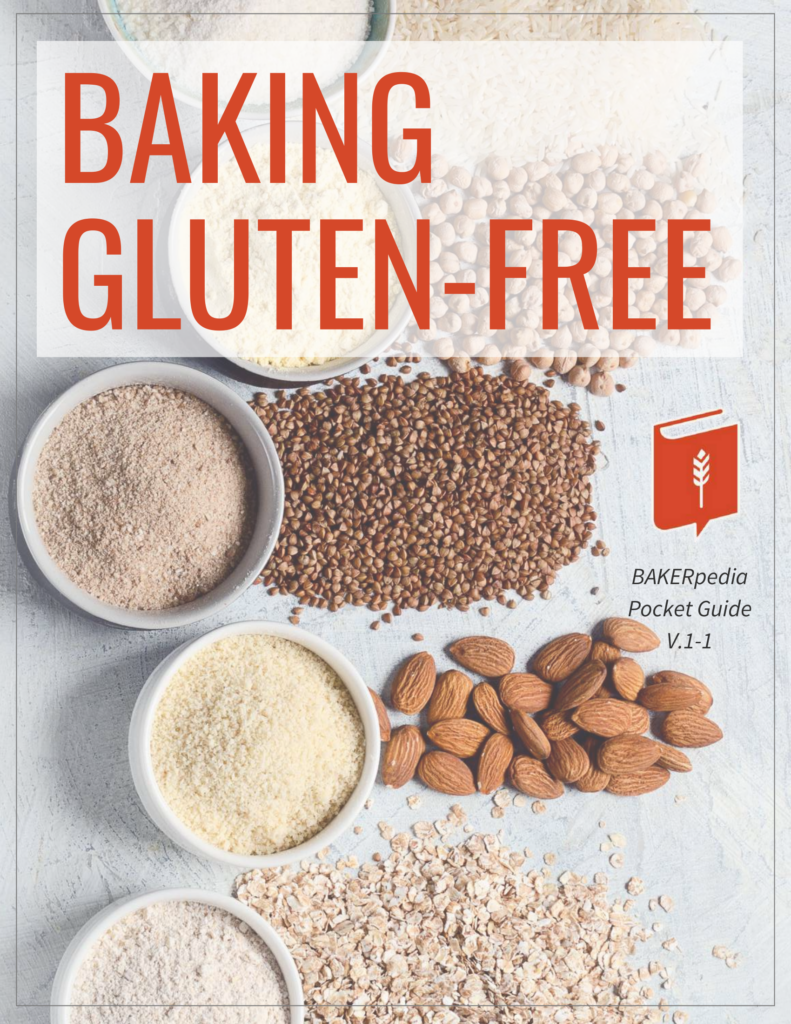Gluten-Free Baking Made Easy

The gluten-free trend has shown no signs of slowing down in recent years. This bakery trend surged in popularity, driven by a combination of health awareness, dietary preferences, and the need to cater to individuals with celiac disease. The demand for gluten-free baked goods is no longer limited to those with gluten-related conditions. Many of today’s consumers are hungry for gluten-free options because of their perceived health benefits or simply as a lifestyle choice. This has marked a huge shift in the baking industry, with gluten-free products now a significant market segment valued at $12.3 billion in 2023, projected to grow at a compound annual growth rate (CAGR) of 10.1% from 2024 to 2032. Join us as we share some insights from our most recent Baking Gluten-Free BAKERview.
The Challenges of Gluten-Free Baking
The gluten-free trend can sometimes feel like a catch-22 for bakers, presenting both opportunities and challenges. Gluten plays a crucial role in traditional baking, contributing to the texture, structure, and overall quality of baked goods. As a result, its absence in a formulation requires careful consideration and a deep understanding of alternative ingredients and their properties to replicate the desired characteristics of conventional wheat-based products.
To learn more, download the Baking Gluten Free Pocket Guide:

Essential Ingredients for Gluten-Free Baking
Ingredients are your strongest allies in gluten-free baking. Here’s what you need to know:
Alternative Flours and Fillers
The first step in succeeding in gluten-free baking is choosing the right gluten-free flours for your application. These flours, derived from grains like rice, corn, and sorghum, or nuts and legumes such as almonds and chickpeas, must be combined with starches, proteins, and hydrocolloids to mimic the texture and structure that gluten provides. For instance, xanthan gum and guar gum are commonly used hydrocolloids that help bind ingredients and retain moisture, which are essential for achieving a desirable texture in gluten-free products.
Water
Water doesn’t just hydrate! It also plays multiple roles in gluten-free baking. Water aids in the activation of ingredients like chia and flax seeds, which form gels that contribute to the binding and structural integrity of the dough or batter. The water content in gluten-free formulations must be carefully managed, as it directly impacts the dough’s consistency and the final product’s texture.
Fats and Oils
Fats, whether they are vegetable oils, margarine, butter, or shortening, are crucial in gluten-free baking. They act as tenderizers, contribute to moisture retention, enhance flavor, and aid in the leavening process. Also, fats improve the mouthfeel of baked goods and contribute to the browning and appearance of the final product.
Sugars
Sugar does so much more than simply sweeten the deal. In gluten-free baking, sugar contributes to the moist and tender texture of products, supports the Maillard reaction for browning, and acts as a substrate for yeast during fermentation in bread-making. In cakes, sugar’s role in creaming with fats helps to aerate the batter, contributing to a lighter and fluffier texture.
Proteins
Replacing gluten’s functionality is one of the most significant challenges in gluten-free baking. Protein isolates, such as those from peas or soy, can help improve the volume, texture, and structure of baked goods. They provide the necessary chewiness and moistness while enhancing the dough’s stability and gas retention capacity, which is crucial for achieving the desired rise and crumb structure.
Starches and Hydrocolloids
Modified starches are integral to gluten-free formulations, providing texture and structure similar to that of gluten. Hydrocolloids like xanthan gum, guar gum, and cellulose gum help bind the dough, retain moisture, and ensure the product does not become too crumbly or dry.
Leavening Agents
Achieving a light and airy texture in gluten-free baked goods often relies on chemical leavening agents, such as baking soda and leavening acids. These agents are crucial in the absence of gluten, helping to provide the rise and structure that gluten would normally contribute.
Emulsifiers and Enzymes
Emulsifiers stabilize the mixture of fats and water in gluten-free batters, improving texture and structure. Additionally, they enhance the slicing quality of bread, reducing crumbling. Enzymes, such as amylases and proteases, improve dough handling and stability, contributing to better hydration and volume in gluten-free bread.
Practical Considerations in Gluten-Free Baking
Gluten-free baking often calls for innovative approaches to traditional baking methods. For instance, there is no need for extensive kneading, as gluten development is not a concern. Also, proofing times and baking temperatures may differ, requiring careful monitoring to achieve the desired results. Cooling times are crucial, especially for bread, to ensure the product is stable enough for slicing.
Curious to learn more? Watch the BAKERview here:
The gluten-free baking sector is dynamic and rapidly growing, offering big opportunities for bakers looking to expand their reach. However, it requires a deep understanding of alternative ingredients and their interactions to produce high-quality gluten-free baked goods that meet consumer expectations. By mastering the use of alternative flour, fats, sugars, proteins, and other essential ingredients, bakers can successfully navigate the complexities of gluten-free baking and tap into this lucrative market. Happy baking!
Want to stay up-to-date with BAKERpedia? Sign up for our newsletter today!

